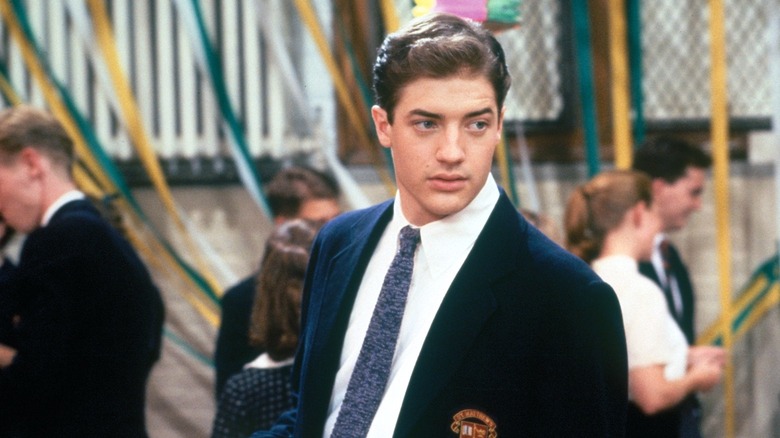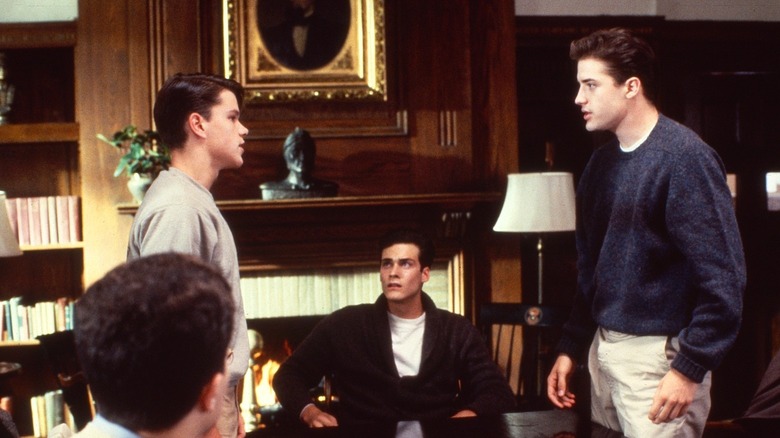School Ties Shot Three Alternate Endings To Replace The Original Ending Audiences Didn't Like
Brendan Fraser is experiencing something of a career renaissance, and really, we couldn't be happier. While he's getting critical acclaim — and a probable Oscar nomination — for "The Whale," he has put in outstanding work throughout his career. Yes, we're even including "Encino Man," in which he performed some genuinely terrific physical comedy. But while he's arguably best known for goofy comedies and action adventures like "The Mummy," Fraser is also no stranger to dramatic roles, such as his breakthrough role in "School Ties."
The film is a strong coming-of-age story dealing with issues of antisemitism in the 1950s, and features a largely satisfying ending that sees Fraser's character, David Greene, come out on top after being wrongly accused of cheating and threatened with expulsion from his prestigious boarding school.
In retrospect, this film about a poor Jewish kid from Scranton recruited to play football at a WASPy New England school features a star-studded cast, including Matt Damon, Ben Affleck, Chris O'Donnell, and Cole Hauser (who's getting a bit of a career resurgence himself as one of the stars of "Yellowstone"). At the time, they were virtual unknowns.
Damon plays the villain of the movie: a rich, privileged bigot named Charlie Dillon, who tries to make David's life a living hell once he finds out about his Jewish heritage. In the end, his efforts to get David expelled, as well as his own cheating, are discovered and he's booted from the school as David walks off across the campus, victorious but alone. But that wasn't always the way the film was meant to conclude.
Audiences wanted a more realistic conclusion
The ending of "School Ties" is, ultimately, an uplifting one. But it's also a sad one because David is still going to have to deal with unfounded hatred and challenges that his classmates could never understand. So when the original ending featured the entire group rallying around him in the closing shot, the audiences didn't buy it. As the film's director Robert Mandel told Yahoo Entertainment:
"The original ending was he walked off, as he does, but the other boys joined him. The audience did not like that ending. You do previews, and they loved the movie, but the ending made them — they just didn't believe it."
With that in mind, three alternate endings were shot. In the first, David once again is joined by the full group, but the visuals are changed by adding gray and snow to make it feel more somber. Then, another version was filmed in which only O'Donnell and Hauser join David. Finally, they filmed what would wind up becoming the actual closing shot in the movie.
"We just had David walking alone. We previewed all three, clearly they wanted David to be alone. And having recently seen it [again], I think it was a really good choice."
And frankly, we agree. Sure, the original ending is a nice sentiment, but gives off vibes of an after-school special. Fortunately, thanks to audience feedback, we were treated to a much more realistic conclusion.

